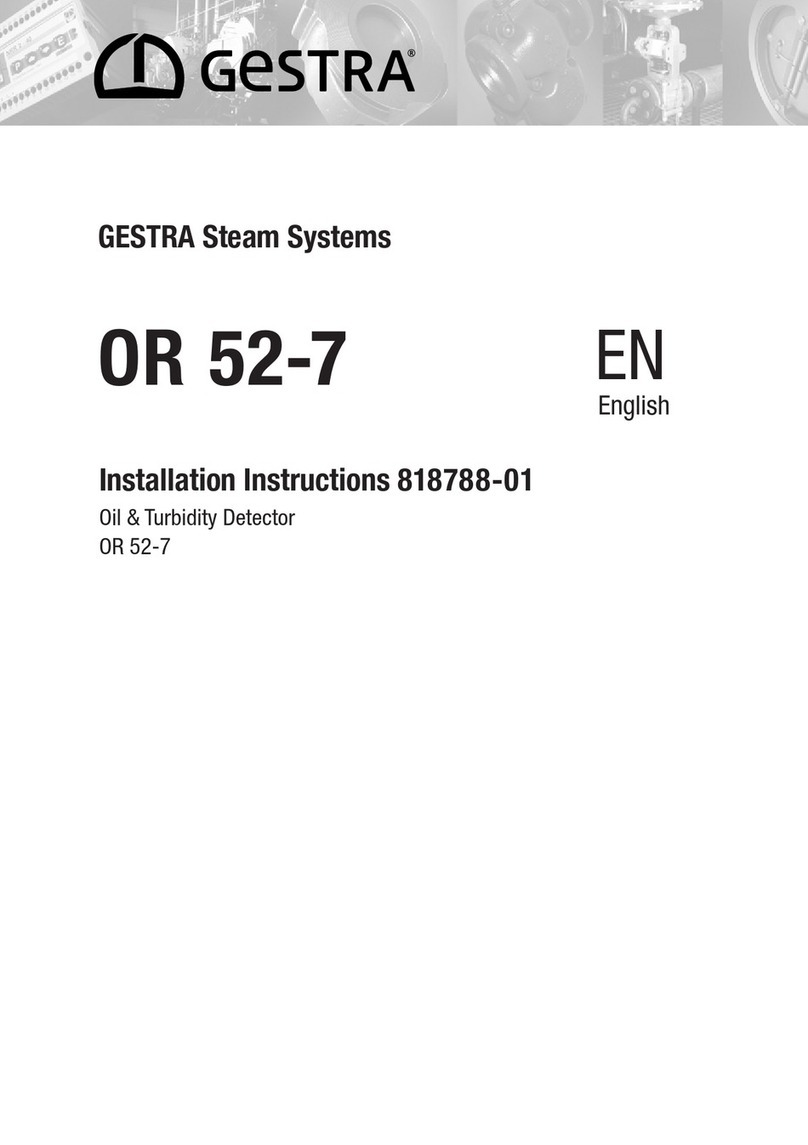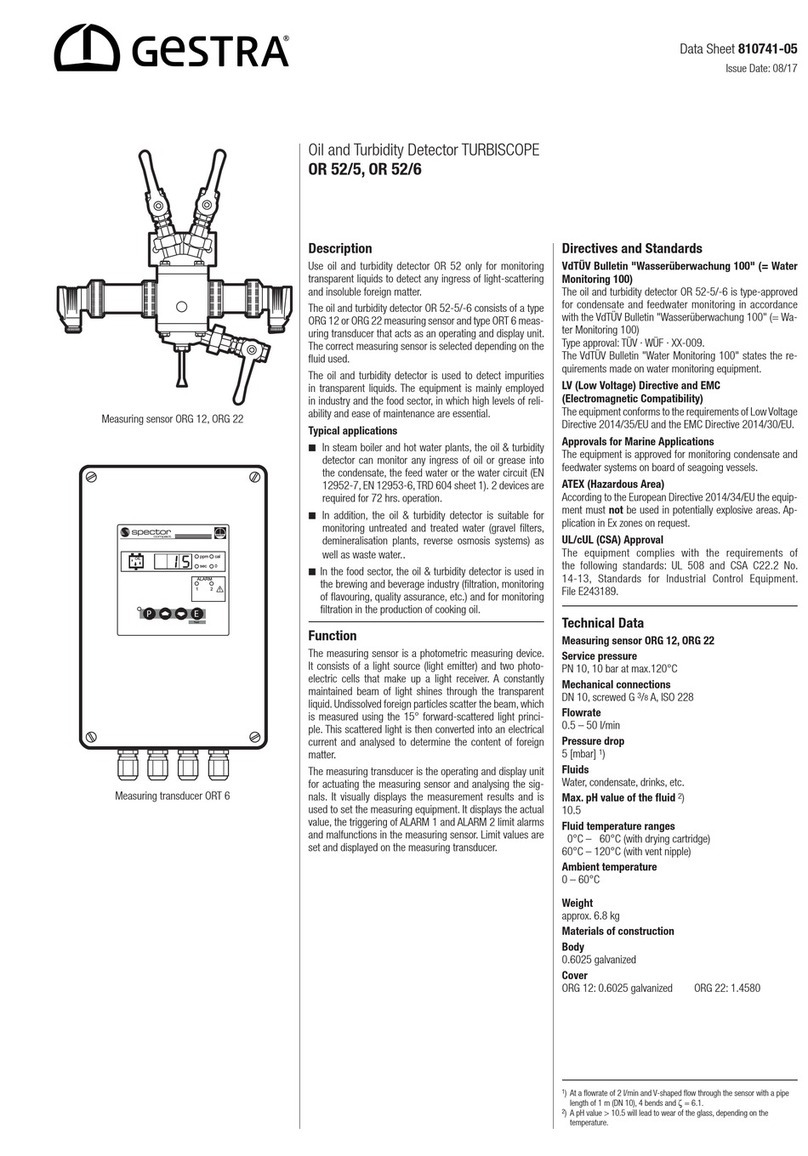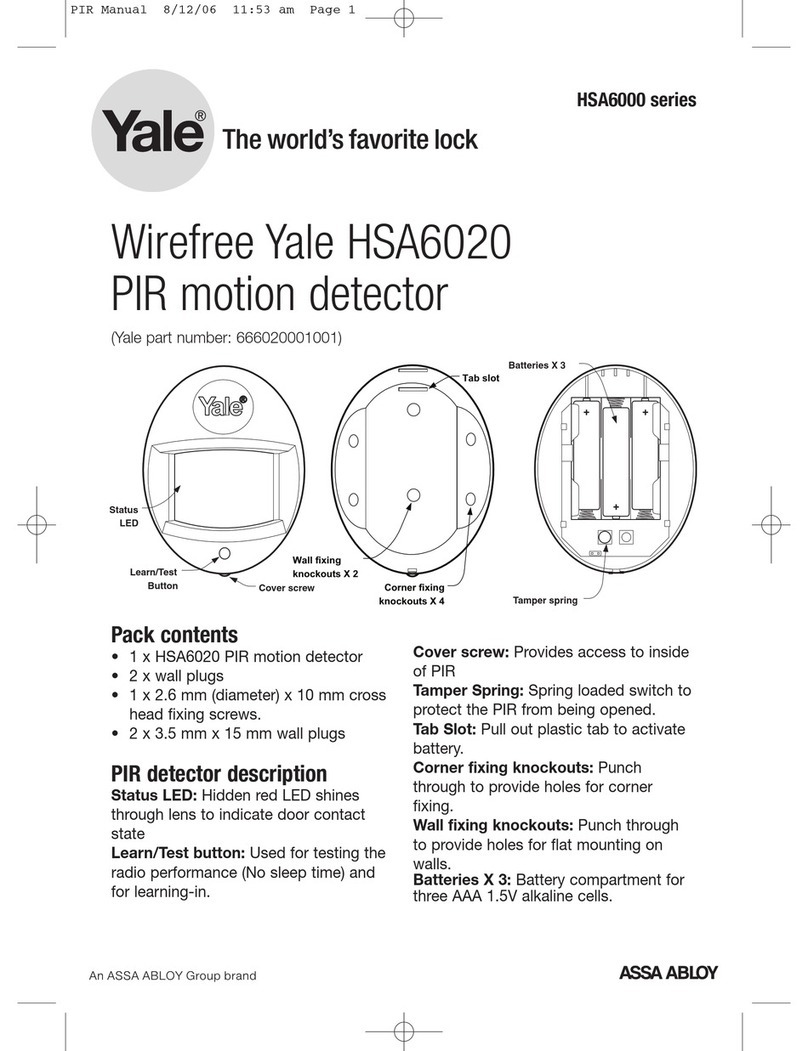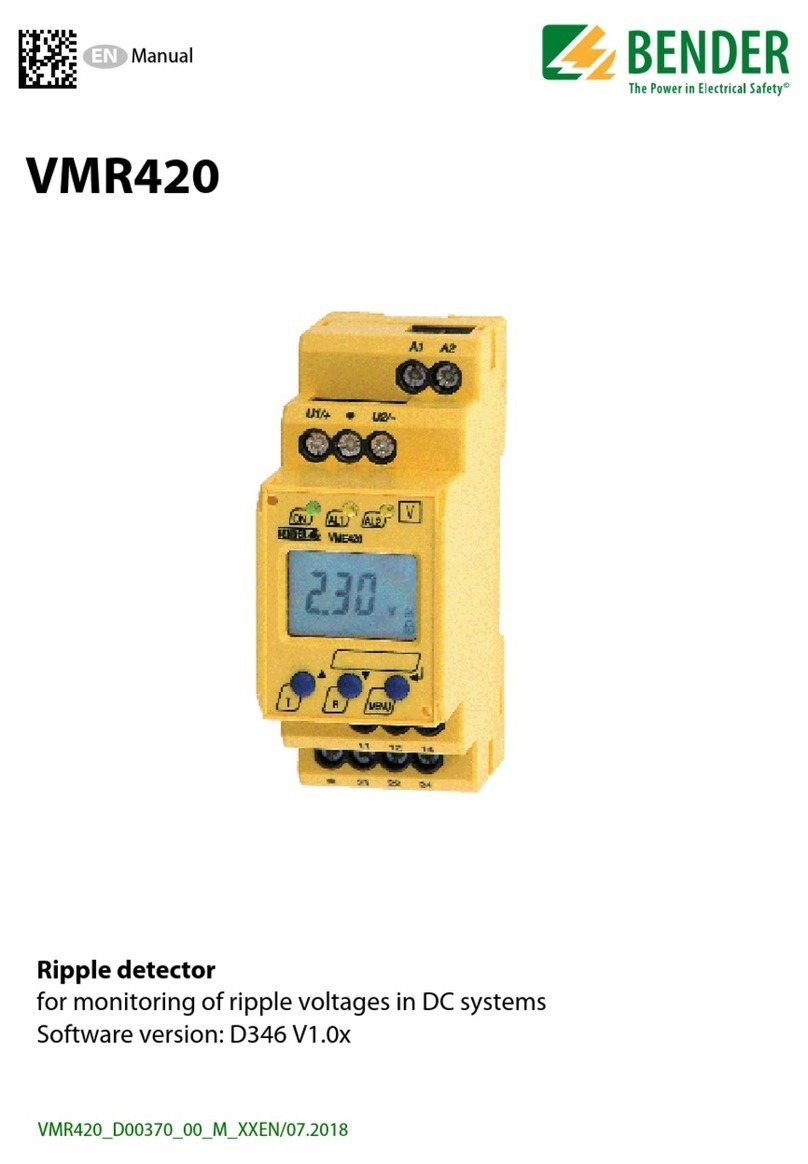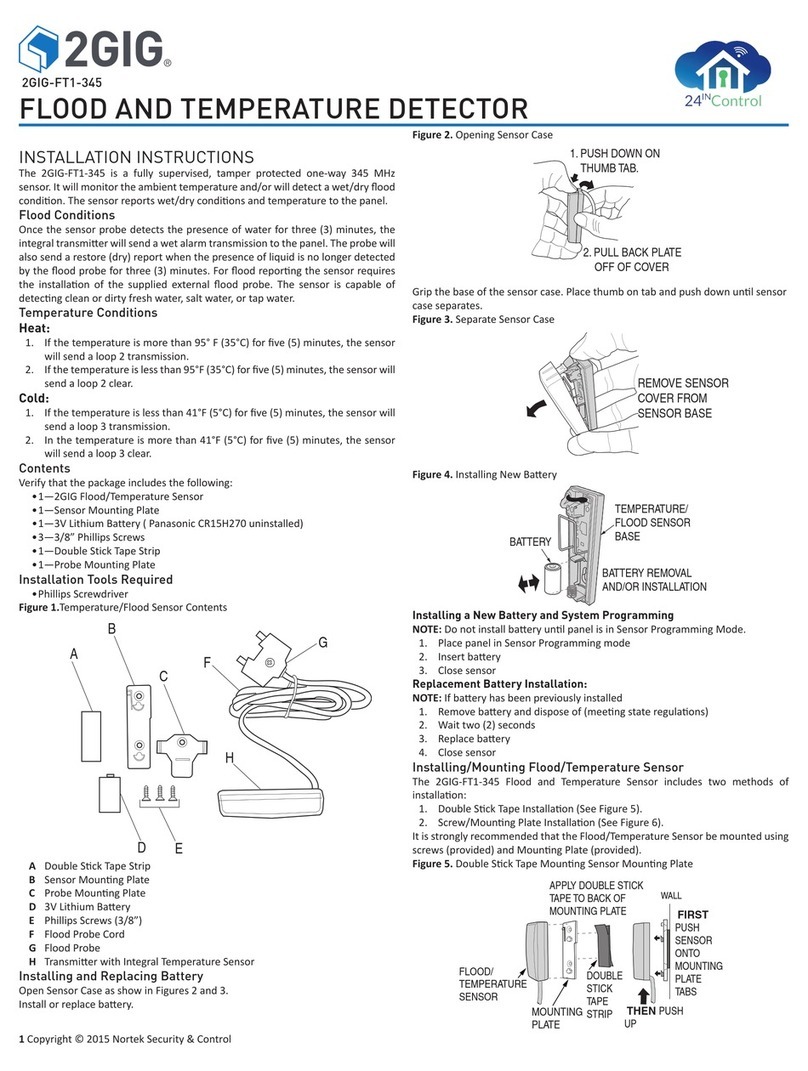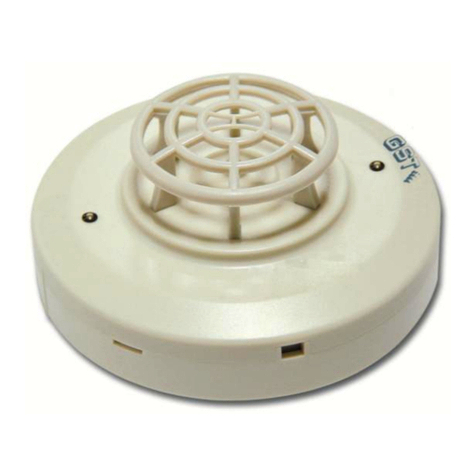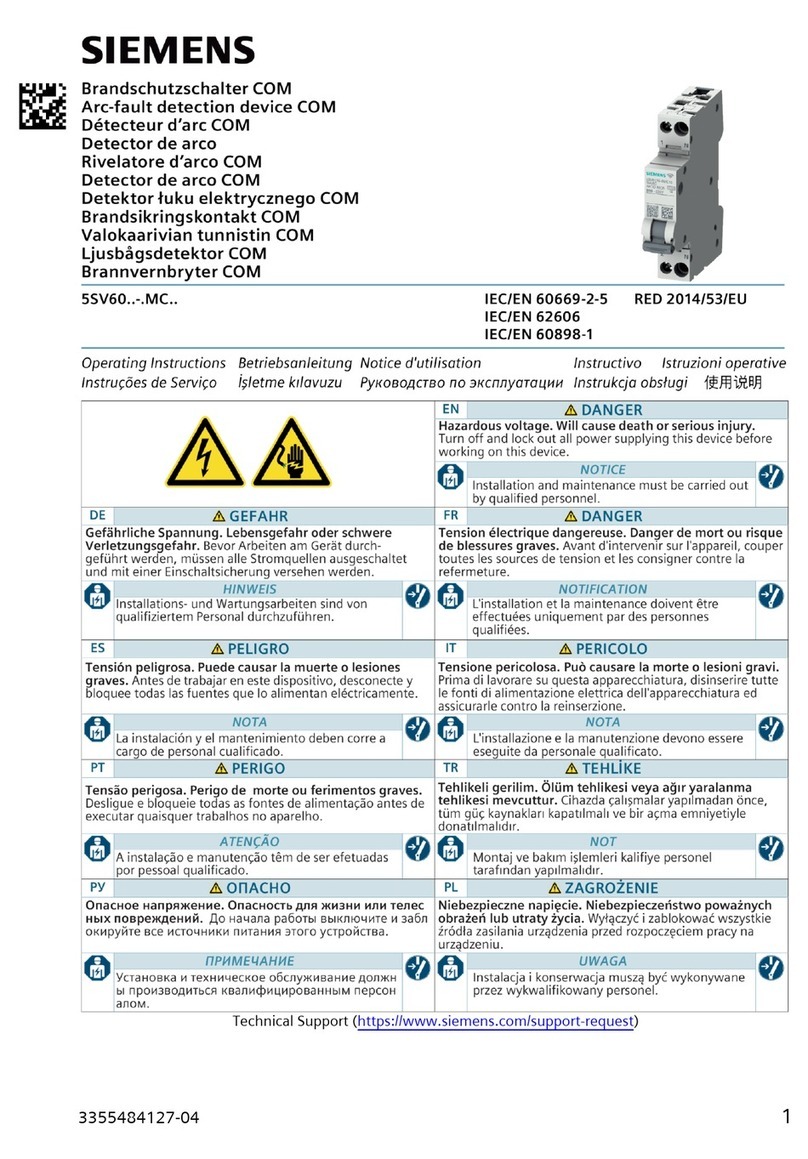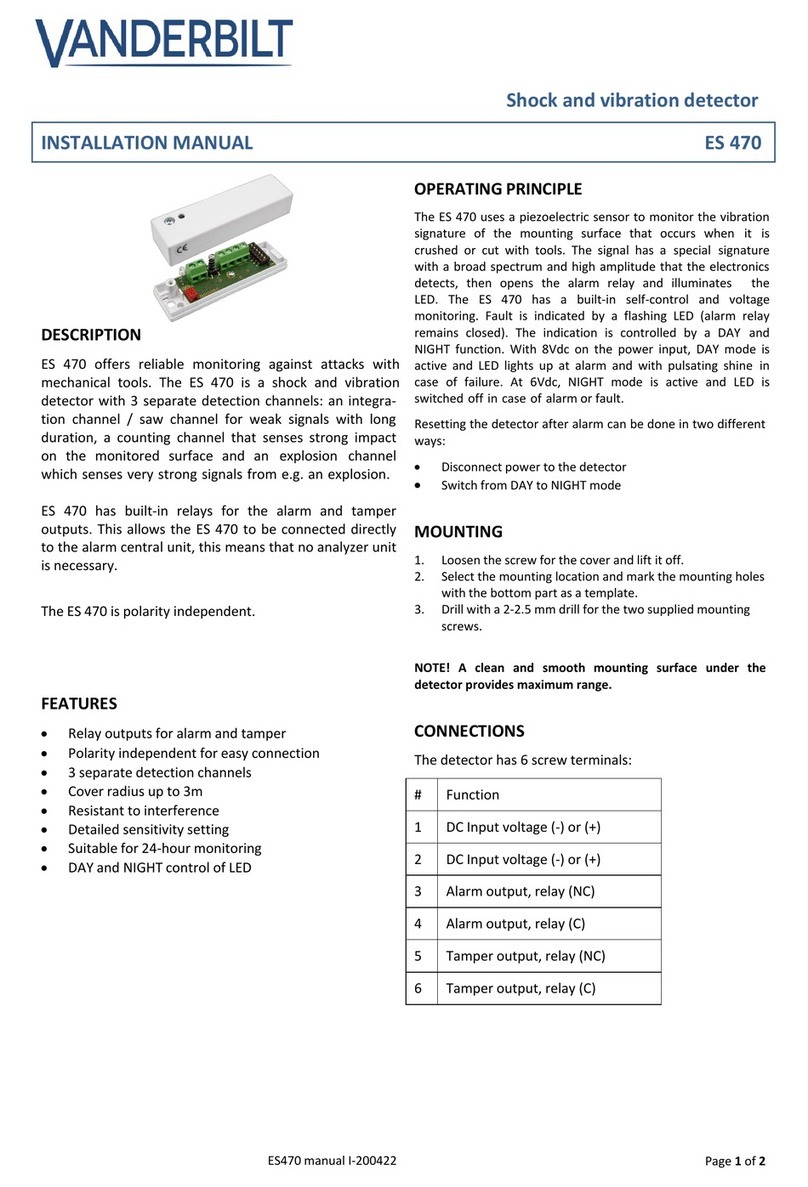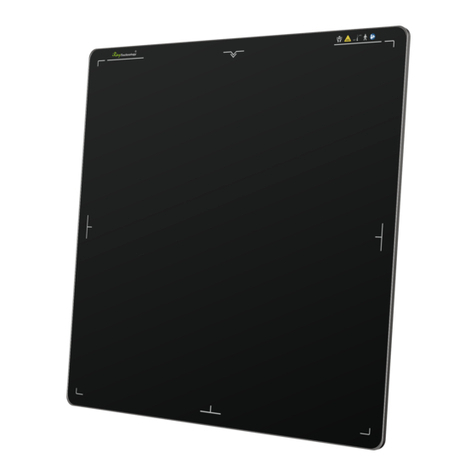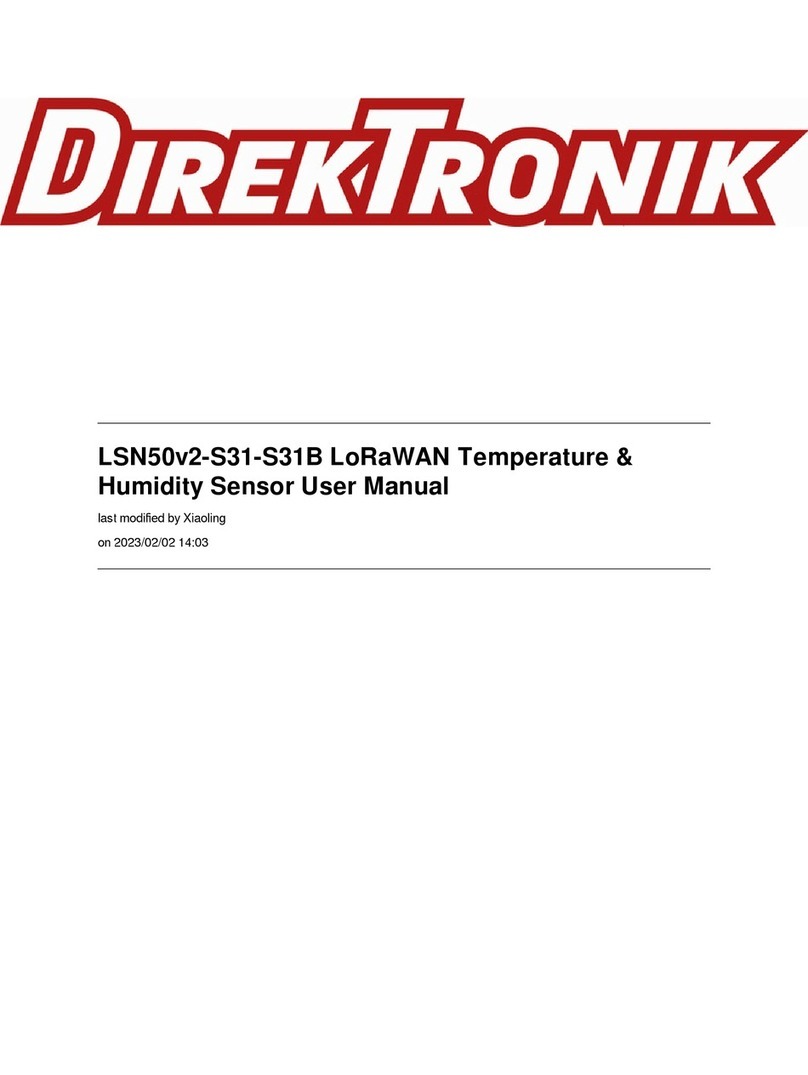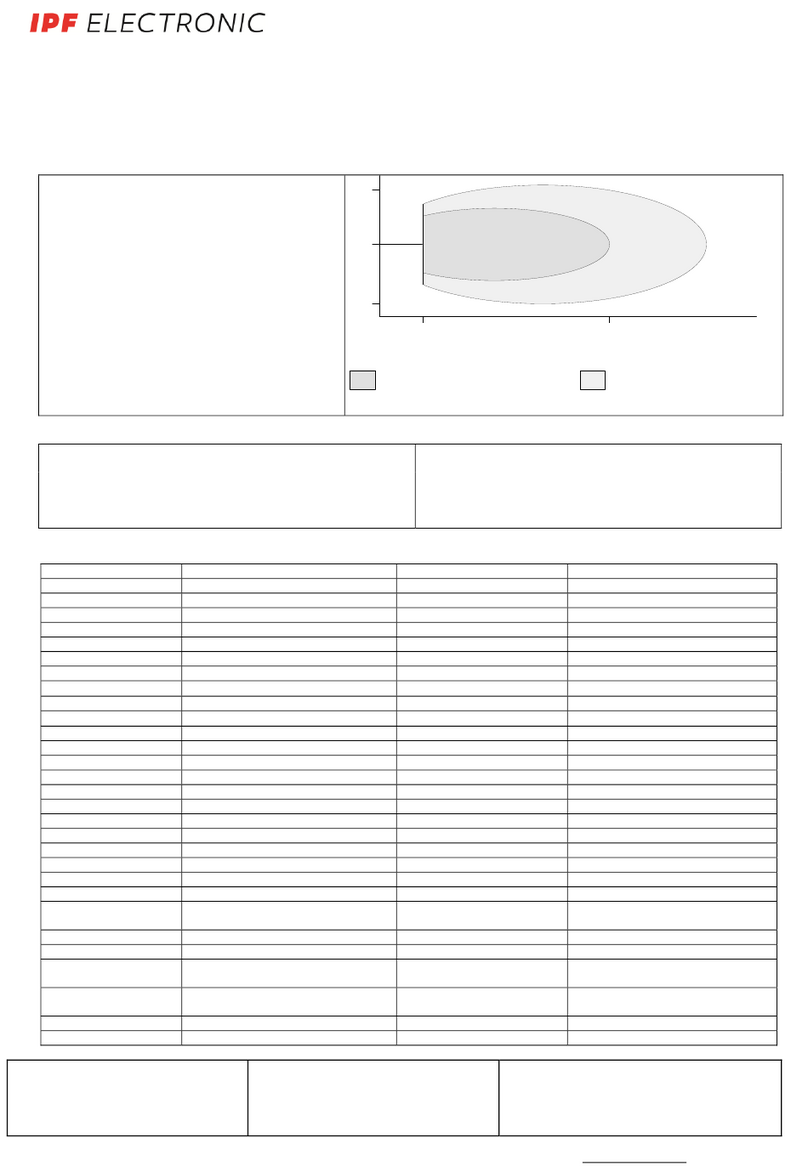GESTRA ORGS 11-1 User manual

1
Installation & Operating Instructions
ORGS 11-1, ORGS 11-2
EN
English
Oil Detector & Alarm
ORGS 111
ORGS 112
Original Installation Instructions
81080106

2
Contents
Page
Important notes
Usage for the intended purpose...............................................................................................................4
Function..................................................................................................................................................4
Safety note..............................................................................................................................................4
Directives and standards
Approvals for Marine Applications ...........................................................................................................5
LV (Low Voltage) Directive and EMC (Electromagnetic Compatibility)........................................................5
ATEX (Atmosphère Explosible) .................................................................................................................5
Note on the Declaration of Conformity / Manufacturer's Declaration ...................................................5
Design ....................................................................................................................................................5
Technical data
ORGS 11-2..............................................................................................................................................6
Name plate/marking ...............................................................................................................................8
Installation
Installation requirements.........................................................................................................................9
Examples of installation ........................................................................................................................10
Dimensions ORGS 11-1.........................................................................................................................11
Key .......................................................................................................................................................11
Dimensions ORGS 11-2.........................................................................................................................12
ORGS 11-2 ............................................................................................................................................13
Tools .....................................................................................................................................................13
Key .......................................................................................................................................................13
Electrical connection
ORGS 11-1............................................................................................................................................14
Connection of measuring electrode ORGS 11-1.....................................................................................15
Connecting ORGS 11-1 ........................................................................................................................15
Key .......................................................................................................................................................15
Tools .....................................................................................................................................................15
Wiring diagram for oil detector & alarm ORGS 11-1...............................................................................16
Connecting oil detector & alarm ORGS 11-1 with supply voltage 24 / 115 / 230 V AC ............................16
Basic settings
Factory setting ......................................................................................................................................17
Selecting the measuring range..............................................................................................................17

3
Contents
Page
continued
Commissioning procedure
Applying supply voltage.........................................................................................................................18
Operating valves ...................................................................................................................................18
Operation
Normal operation, oil alarm ...................................................................................................................18
Troubleshooting
Safety note............................................................................................................................................19
Indication, diagnosis and remedy ..........................................................................................................19
Exchanging the electronic module.........................................................................................................20
Removing and disposing of measuring electrode ORGS 111
Safety note............................................................................................................................................21
Removing and disposing of measuring electrode ORGS 11-1.................................................................21

4
Function
The oil detector & alarm ORGS 112 is an equipment unit consisting of the measuring electrode
ORGS 11-1 and a measuring pot.
The measuring electrode ORGS 11-1 is a compact-type system that comprises the measuring
electrode and an electronic module integrated in the terminal box. The electrode operation is based on
the conductive measuring principle using the electrical conductivity of the water for signalling water
level. The electronic module detects whether the electrode rods are submerged or exposed and, in the
event of ingress of oil, deactivates the output contacts.
A water sample, taken from the cooling water system downstream of the location at the highest point
where ingress of oil might occur, is fed from below into the measuring pot of the ORGS 11-2. If the
water is contaminated with oil, the oil droplets - due to their lower density - ascend and accumulate on
top of the water and, consequently, the electrode rods are now submerged in this oil film.
Oil is not electrically conductive, which means that no current can flow between the electrode rods of
the measuring electrode. In this case the oil detector & alarm will signal ingress of oil and trigger an
alarm.
The amount of oil necessary to signal ingress of oil depends on the design of the measuring pot and
the length of the electrode rods. The measuring pot is matched to the electrode such that ingress of oil
is signalled when the oil content limit of approx. 50 ml is reached.
The equipment can detect all substances that are insoluble in water, not emulsified and lighter than
water. In addition, the equipment can also detect all liquids with a conductivity value below the
adjusted response sensitivity.
Important notes
Usage for the intended purpose
Use oil detector & alarm ORGS 11-2 only for signalling ingress of oil in cooling water systems.
Safety note
Danger
When loosening the measuring electrodes hot cooling water may escape.
This presents the risk of severe scalding all over the body!
Do not remove the measuring electrode ORGS 11-1 unless the boiler pressure is verified
to be zero.
The terminal strip of the measuring electrode ORGS 11-1 is live during operation!
This presents the danger of electric shock!
Cut off power supply before mounting or removing the housing cover!
The equipment must only be installed and commissioned by qualified and competent staff.
Retrofitting and maintenance work must only be performed by qualified staff who - through adequate
training - have achieved a recognised level of competence.
Attention
The name plate specifies the technical features of the equipment. Do not commission or
operate any item of equipment that does not bear its specific name plate.

5
Design
ORGS 112:
Equipment module with three isolating valves and rapid-action deaerator, ready for connection. Fig. 5
ORGS 111 :
Measuring electrode as spare part for equipment module ORGS 11-2 Fig. 4
Attention
nRust preventing oils, which are for instance emulsified in the cooling water, will not
raise an alarm!
Directives and standards
Approvals for Marine Applications
The equipment is approved for marine applications.
ATEX (Atmosphère Explosible)
According to the European Directive 2014/34/EU the equipment must not be used in explosion-risk
areas.
Note on the Declaration of Conformity / Manufacturer's Declaration
For details on the conformity of our equipment according to the European Directives see our Declaration
of Conformity or our Declaration of Manufacturer.
The current Declaration of Conformity / Declaration of Manufacturer are available in the Internet under
www.gestra.de documents
or can be requested from us.
LV (Low Voltage) Directive and EMC (Electromagnetic Compatibility)
The equipment meets the requirements of the Low Voltage Directive 2014/35/EU and the
EMC Directive 2014/30/EU.

6
ORGS 112
Technical data
Oil detector & alarm ORGS 112 (equipment unit)
Service pressure
6 bar
Service temperature
110 °C
Flow velocity
100 l/h to 300 l/h, recommended 200 l/h
Pressure drop ∆pv
0.06 bar (under test conditions)
Alarm
Raised when approx. 50 ml oil has accumulated
Water inlet, drain
Ball valve with EO-connection 15 L
Water outlet
Ball valve with EO-connection 12 L
Weight
approx. 7.4 kg
Measuring electrode ORGS 111 (component of ORGS 11-2)
Mechanical connection
Screwed G 1 A, ISO 228
Materials
Screw-in body: 1.4571, X6CrNiMoTi17-12-2
Electrode rods: 1.4571, X6CrNiMoTi17-12-2
Insulating sheath: PTFE
Terminal box: 3.2161 G AlSi8Cu3
Supply voltage
230 V +/- 10 %, 50/60 Hz
115 V +/- 10 %, 50/60 Hz
24 V +/- 10 %, 50/60 Hz (optional)
Power consumption
5 VA
Fuse
external slow-blow 0.5 A
internal thermal fuse Tmax = 102 °C
Response sensitivity
Range 1: 10 µS/cm
Range 2: 0.5 μS/cm
Code-switch selectable
Electrode voltage
10 Vpp

7
ORGS 111
Outputs for control circuit
2 volt-free change-over contacts,
8 A 250 V AC / 30 V DC cos ϕ= 1
De-energizing delay: 3 sec.
Provide inductive loads with RC combinations according to manufacturer's specification to ensure
interference suppression.
Indicators and adjusters
2 red LEDs indicating "Electrode submerged" and "Output relay energized" (no ingress of oil)
1 four-pole code switch for selecting the response sensitivity
Electrical connection
2 cable gland with integrated cable clamp M20 x 1.5
1 five-pole screw-type terminal strip, detachable, conductor size 1.5 mm2
Protection
IP 65 to DIN EN 60529
Max. admissible ambient temperature
Max. 70 °C
Storage and transport temperature
– 40 up to + 80 °C
Certification
Marine applications Det Norske Veritas / Germanischer Lloyd
Bureau Veritas
Lloyds Register
Technical data
Scope of supply
ORGS 112
1 Oil detector & alarm ORGS 11-2, PN 6
1 Measuring electrode ORGS 11-1 (mounted)
2 Sealing plugs for cable entry
1 Installation manual
continued
continued

8
24 V
IP 65
Pmax
Tmax
ORGS 11 - 1
115/230 V
PN 6 G 1 1.4571
2
2
5
5
0
0
V
V
~
~
T
T
2
2
,
,
5
5
A
A
Before removing cover
isolate from power supplies
See installation instructions
Avant d'ouvrir le couvercle
dèconnecter complètement
l'appareil
Voir instructions de
montage
6 bar ( 87psi)
110°C (230°F)
Tamb
70°C
(158°F)
DNVGL.TAA00000A1
LR.07/20031 (E2)
BV.17515/C0 BV
LR 07/20031 (E2)
Vor Öffnen des Deckels
Gerät freischalten!
Betriebsanleitung
beachten
50 / 60 Hz 5VA
Mat-Nr.:
Münchener Str. 77
28215 Bremen
Germany
Technical data
Name plate/marking
Fig. 1
Equipment designation
Pressure rating,
End connection,
Material number
Pressure/temperature range
CE Marking
Spare part specification
Safety note
Disposal note
Power rating
Type approval no.
Manufacturer
continued
A
B
C
D
4 3 2 1
4-388375-02
Geräteschild
ORGS 11-2
01
CorelDraw X8
Przybylski
Laupichler
2001-06-19
Examiner
Designer
Drawer
Scale
Refer to protection
notice ISO 16016!
1:1
No Änderung/Modification Datum/Date Geänd/Modif. PrüferKonstr.
Datum/Date Name/Name
Nr./No
Ersatz für/Replaces Ersetzt durch/Replaced by
Ersteller/
Konstrukteur/
Prüfer/
Schutzvermerk
ISO 16016 beachten!
2001-06-19
2001-06-19
Winters
Maßstab/
Nr./ M-Nr.
Free size tolerance
ISO 2768 mk
Freimaßtoleranzen
ISO 2768 mk
GGEESSTTRRAA
ORGS 11-2
Oil Detector ORGS 11-2 with Electrode ORGS 11-1
6 bar ( 87 psi )
110 °C ( 230 °F )
Flow Rate 100 - 300 l/h
Pmax
Tmax
MADE BY GESTRA
DNV·GL
70
37
„Oil Detector ORGS 11-1 with Separator“ in „Oil Detector ORGS 11-2 with Electrode ORGS 11-1" geändert 2008-08-07 Paul Laup. 11853
02 Logo aktualisiert 2021-02-05 Berndt ---
Aud.
---
---

9
Installation
Installation requirements
The water sample taken from the cooling water system must flow continuously through the oil
detector & alarm ORGS 11-2. We recommend a flowrate of 200 l/h.
The sampling of the cooling water should take place downstream of a potential oil leak at the
highest point and, if possible, in a horizontal line. Since the oil flows in the upper part of the pipe we
recommend the installation of a welding saddle according to DIN 2618 for collecting the oil droplets.
The line leading to the measuring pot of the ORGS 11-2 should be vertically ascending, running
directly into the bottom part of the measuring pot. Avoid any narrow parts in the supply line since
they could give rise to undesired emulsification of the oil.
If space is a consideration and the measuring pot has to be installed at a lower point than the main
cooling line make sure that the line leading to the measuring pot features sufficiently sized bends in
order to prevent emulsification.
To achieve the recommended flowrate of approx. 200 l/h provide the main cooling water line with a
standard orifice plate in order to throttle the flow velocity between the water sampling location and
its re-entry point.
The pressure drop ∆pvacross the measuring pot is 0.06 bar.
The pressure drops of the connecting lines depend on the design and layout of the installation and
must be ascertained individually. The calculated resistance coefficient ζ can be used to determine
the opening ratio and, consequently, the required diameter "d" for the opening of the standard orifice
plate.
For more information on the sizing and layout of fluid dynamic systems please refer to the
corresponding technical literature and relevant standards.

10
Examples of installation
Installation
Cooling
water cycle
Cooling
water cycle
2
3
8
4
9
7
1
5
6
2
3
8
4
9
7
1
5
6
Fig. 3
Fig. 2
continued

11
Installation
Key
1 Oil detector & alarm ORGS 11-2 (equipment unit)
2 Automatic rapid-action deaerator
3 Cooling water outlet (ball valve DN 12 L, PN 500)
4 Drain (ball valve DN 15 L, PN 500)
5 Cooling water inlet (ball valve DN 15 L, PN 500)
Dimensions ORGS 111
GESTRA SteamSystems
GESTRA
Fig. 4
∅42
336
173
G1 A
ISO 228
96
50
15
140
b = 70
6 Cooling water inlet DN 15
(outside ∅ 20 mm)
7 Standard orifice plate
8 Cooling water outlet DN 12
(outside ∅ 16 mm)
9 Main engine, diesel fuel, oil cooler, etc.
continued

12
Dimensions ORGS 112
Installation
Fig. 5
a
85
~ 845
~ 685
0
60
8.5
45
15
23
R 8
59
90
331
f
e
5
d
a
~ 160
c
b
8
11
270
45
70
19
210
a
continued

13
Installation
Key
0 Measuring electrode ORGS 11-1
a Support flange
b Drain (ball valve DN 15 L, PN 500)
c Cooling water inlet (ball valve DN 15 L, PN 500)
d Cooling water outlet (ball valve DN 12 L, PN 500)
e Rapid-action deaerator
f Sealing plug with lateral vent hole
1. Use support flanges ato install the oil detector ORGS 11-2 in a suitable place.
2. Connect the supply line, the return line and the drain line with the progressive ring fitting of the ball
valves in a pressure-tight manner.
3. Close ball valve band open ball valves cand d. If the cooling water line is under pressure the
rapid-action deaerator ewill vent the ORGS 11-2.
Note
nPlease refer to the examples of installation on page 10, Fig. 2, Fig. 3
nFig. 2 Recommended installation for an optimum arrangement of the measuring pot.
nFig. 3 Recommended installation if the measuring pot must be mounted at a lower point
Tools
nOpen-end spanner A. F. 22, DIN 3110, ISO 3318
nOpen-end spanner A. F. 27, DIN 3110, ISO 3318
ORGS 112
continued

14
12345678910 11 12 13 14 15
10µS/cm
0,5µS/cm
ORGS 111
Electrical connection
GESTRASteam Systems
GESTRA
Fig. 6
Fig. 7
gih
k
n
l
j
o
p q
r
s
i
t
u
m

15
A self-locking fixing nut jconnects the terminal box to the electrode part. Before establishing the
electrical connection you can turn the terminal box through max. +/– 180° into the desired direction
(cable gland).
Electrical connection
Tools
nScrewdriver, size 1
nScrewdriver, size 2.5, completely insulated according to DIN VDE 0680-1
Connection of measuring electrode ORGS 111
1. Unscrew cover screws gand remove cover h. Fig. 6
2. Detach terminal strip nfrom circuit board.
3. Strip off approx. 40 mm of cable insulation coating and remove approx. 5 mm of conductor end
insulation.
4. Loosen cable glands i. If the equipment is supplied with 24 V pull control cable through one of the
cable glands. Seal off the unused cable gland (protection IP 65). If the equipment is supplied with
115 / 230 V pull the power cable through the right cable gland and the control cable through the left.
5. Connect the individual cables according to the wiring diagram to the terminal strip n.
6. Re-attach terminal strip nto circuit board.
7. Tighten cable glands i.
7. Mount cover hand fasten cover screws g.
Connecting ORGS 111
Attention
nThe following relocations of cables with basic insulation are not permissible:
Mains and control cables in low voltage areas.
gCover screws (cross recess head screws M4)
hBody cover
iCable glands M 20 x 1.5
jFixing nut for terminal box
kThermal fuse TMAX 102 °C
lTerminal strip for thermal fuse
mConnection of functional earth
nTerminal strip
oLED "Oil alarm"
pLED "Oil alarm"
qLED without function
rLED without function
sCode switch for measuring range
tFixing screws for electronic module (4x)
uElectronic module
Key
continued

16
Wiring diagram for oil detector & alarm ORGS 111
Fig. 8 Relays shown in power-off (alarm) position, LEDs 1 and 2 not illuminated!
1
NLL
Oil
Alarm
230(24)V
115V
Netz
Main
Secteur
Red
PE
23456789
10µS/cm
0,5µS/cm
21
1
Alarm
T
2
1234
ON
Electrical connection
Connecting oil detector & alarm ORGS 111 with supply voltage 24 / 115 / 230 V AC
Provide the oil detector & alarm with an external slow-blow fuse 0.5 A. To connect the supply voltage
and the output contacts use multi-core control cables with a min. conductor size 1.5 mm2,
e. g. LiYCY .. x 1.5 mm2.
continued

17
The measuring range can be switch-selected between ≥0.5 µS/cm and ≥10 µS/cm by means of a
code switch s(toggle switch white):
1. Undo the cover screws g
and take off the housing cover
h.Fig. 6
Code switch 1 – 4 OFF Measuring range ≥0.5 µS/cm.
Code switch 1 – 4 ON Measuring range ≥10 µS/cm.
2. Mount cover hand fasten cover screws g.
Basic settings
Factory setting
The oil detector & alarm features the following factory set default values:
nMeasuring range ≥10 µS/cm
Selecting the measuring range
Attention
nDo not damage the electronic components when setting the code switch!
nDo not use a pencil to set the code switch!
831632

18
3. Close ball valve band open ball valves c and d. If the cooling water line is under pressure the
rapid-action deaerator e will vent the ORGS 11-2.
4. If the measuring pot is vented and completely filled with cooling water the red LEDs fand gare
illuminated.
5. Mount cover hand fasten cover screws g.
Operating valves
Operation
Normal operation, oil alarm
1. Under certain conditions air or gases that have been dissolved in the cooling water can accumulate
in the upper part of the measuring pot. The rapid-action deaerator ewill automatically vent the
measuring pot during normal operation.
2. If oil accumulates in the upper part of the measuring pot and the electrode rods of the measuring
electrode are completely covered with oil, an oil alarm will be raised and the LEDs oand p
extinguish.
3. If an oil alarm has been triggered although there is no oil in the cooling water system, please refer
to the troubleshooting notes on page 19.
Commissioning procedure
Danger
The terminal strip of the oil detector & alarm is live during operation.
This presents the danger of electric shock!
Cut off power supply before mounting or removing the housing cover!
Use only a completely insulated screwdriver according to VDE 0680 for setting the
measuring points.
1. Unscrew cover screws gand remove cover h. Fig. 6
2. Please check that the oil detector & alarm is wired in accordance with the wiring diagram
(Fig. 8 page 16) and switch on mains voltage.
Applying supply voltage

19
Troubleshooting
Attention
Before carrying out the fault diagnosis please check:
Supply voltage:
Is the oil detector & alarm supplied with the mains voltage specified on the name plate?
Wiring:
Is the wiring in accordance with the wiring diagram?
Indication, diagnosis and remedy
Indication of malfunctions
Oil alarm raised but no oil in cooling water system
Error Remedy
Power failure. Switch on supply voltage. Check all electrical connections.
Air or gases that have been dissolved in the cooling
water have accumulated in the measuring pot. Check rapid-action deaerator and replace it if necessary .
The electrical conductivity is ≤ 10 μS/cm. Set code switch sto 0.5 μS/cm.See Basic Settings
Thermal fuse kdefective.
Discard and replace defective thermal fuse. Stock code
no. 052433.Check ambient temperature, make sure that it
does not exceed 70° C.
The earth connection to the vessel is interrupted.
Clean seating surfaces and screw in the oil detector &
alarm together with the joint ring 33 x 39, form D, DIN 7603
(made from 1.4301), bright annealed. Do not insulate the
electrode with hemp or PTFE tape!
The electronic module is faulty. Replace electronic module.
Safety note
Danger
The terminal strip of the measuring electrode ORGS 11-1 is live during operation!
This presents the danger of electric shock!
Cut off power supply before mounting or removing the housing cover!
The equipment must only be installed and commissioned by qualified and competent staff.
Retrofitting and maintenance work must only be performed by qualified staff who - through adequate
training - have achieved a recognised level of competence.

20
Troubleshooting
Exchanging the electronic module
1. Unscrew cover screws gand remove cover h. Fig. 6
2. Pull electrode wires from terminal lugs on circuit board. Remove the terminal strip n.
3. Unscrew the fixing screws t for the electronic module uand remove the module. The module is
available as spare part..
4. Install the new electronic module in reverse order.
continued
This manual suits for next models
1
Table of contents
Other GESTRA Security Sensor manuals
Popular Security Sensor manuals by other brands
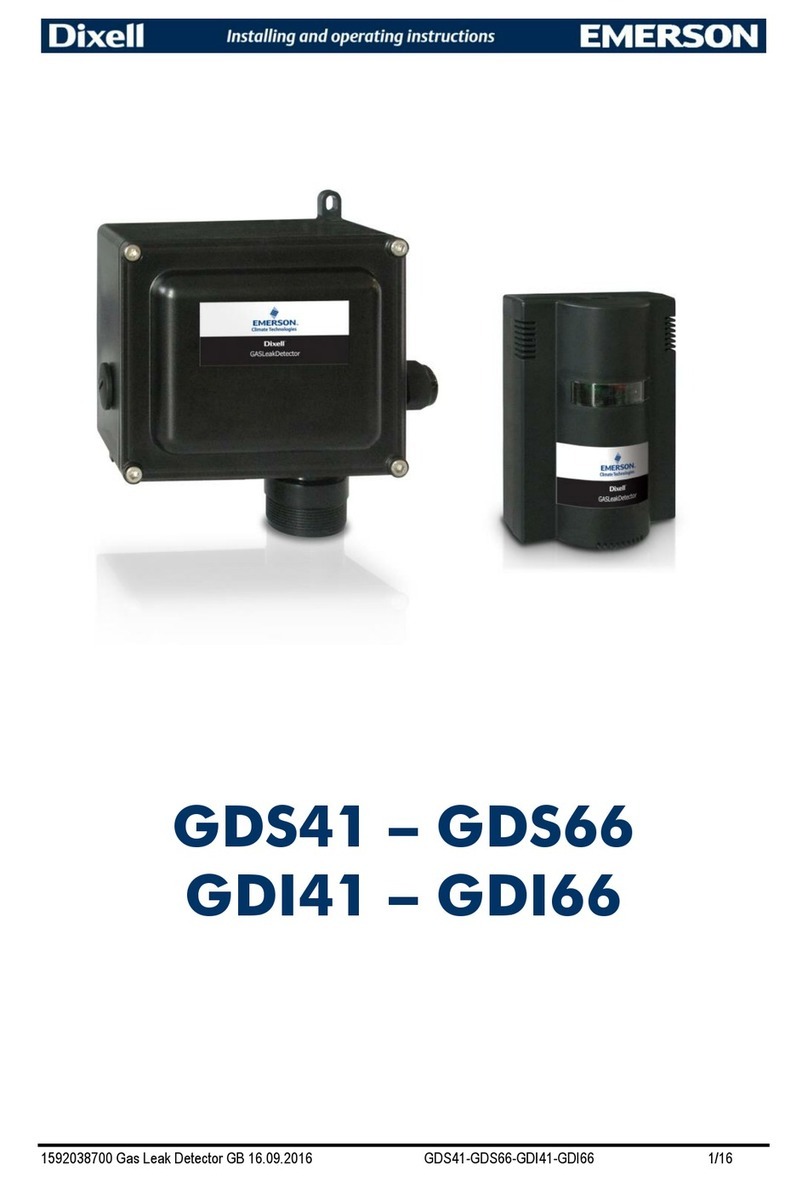
Emerson
Emerson Dixell GDS41 Installing and operating instructions

BBC Bircher
BBC Bircher CareMat Translation of the original instructions
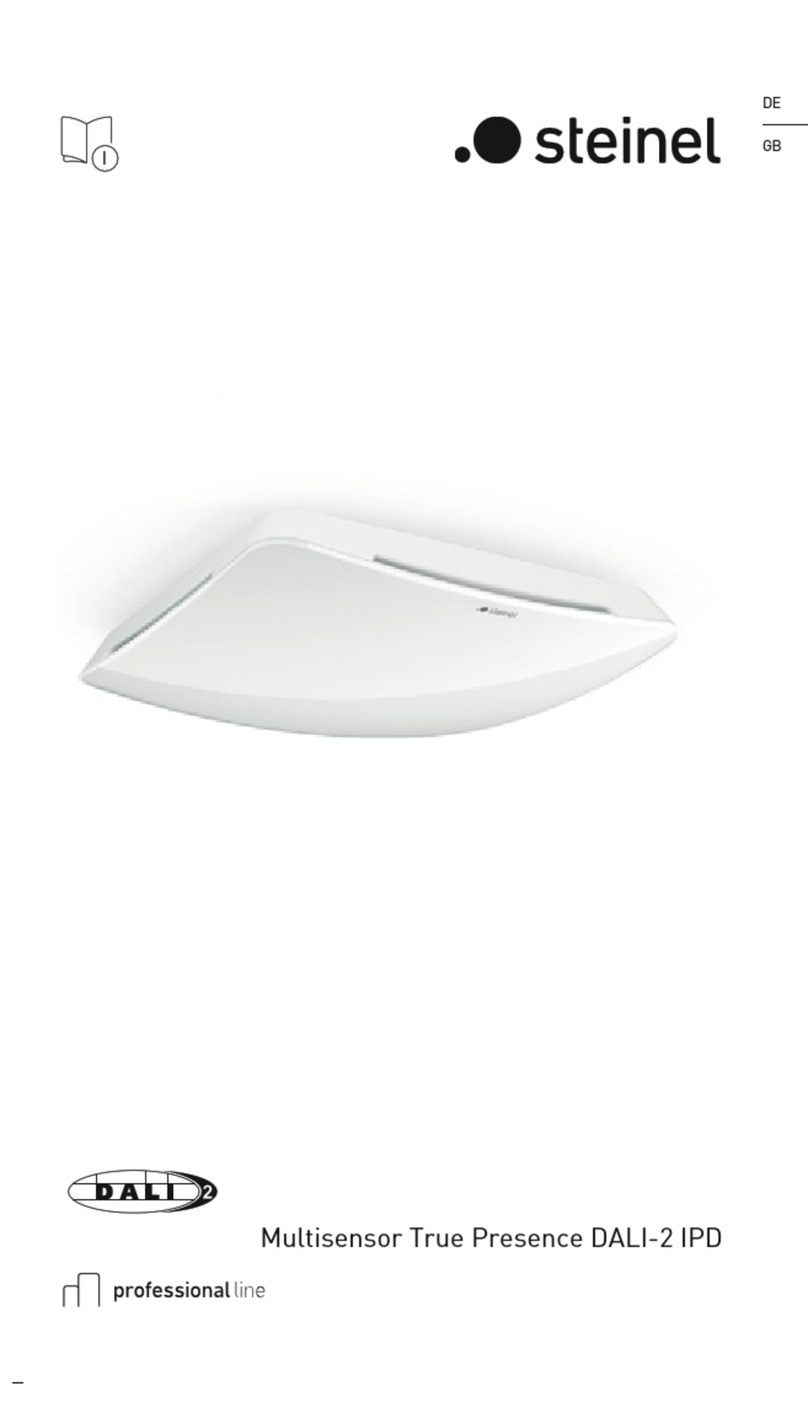
STEINEL
STEINEL Multisensor True Presence DALI-2 IPD manual
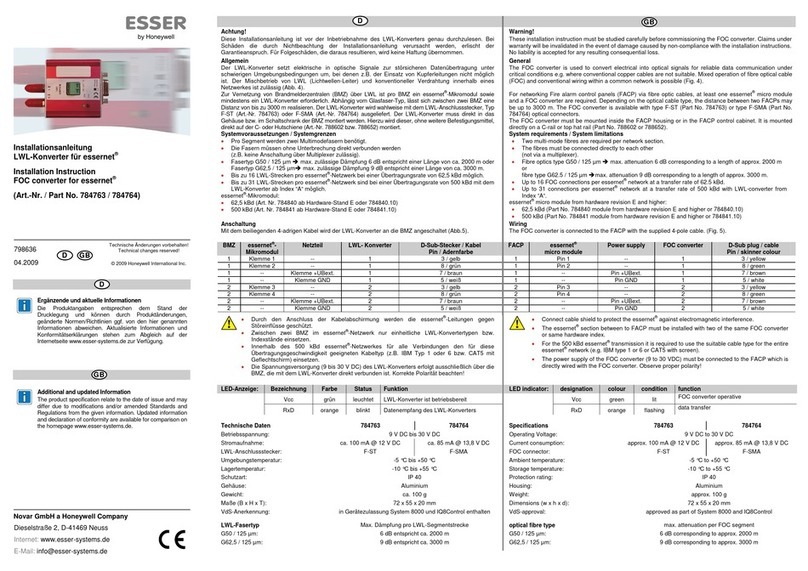
Honeywell
Honeywell ESSER 784763 Installation instruction
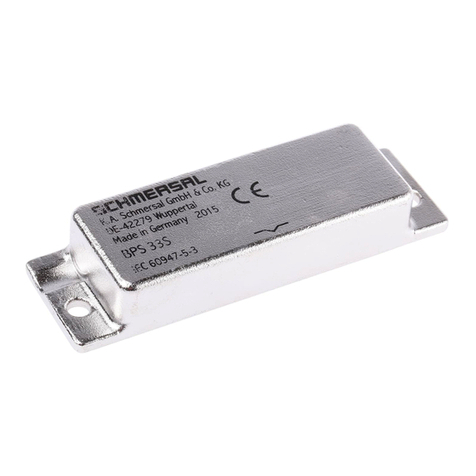
schmersal
schmersal BNS 33S Series operating instructions

Würth
Würth MD 12 Translation of the original operating instructions
